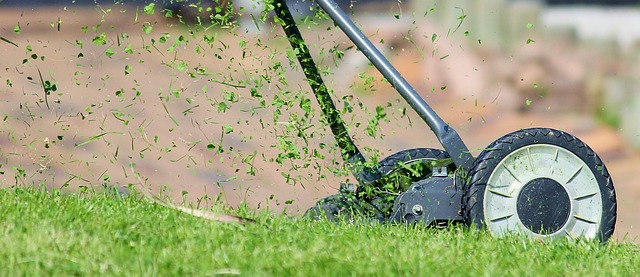Essential Information About Lawn Care
Lawn care involves more than just mowing or watering. It includes understanding how soil, sunlight, and nutrients interact to keep your yard healthy. This informational content provides general knowledge about regular lawn maintenance, common issues like weeds or pests, and simple ways to maintain a clean and green outdoor environment throughout the year.

A well-maintained lawn enhances your home’s curb appeal while providing a comfortable outdoor space for relaxation and activities. Successful lawn care isn’t complicated, but it does require understanding certain principles and establishing regular routines. By mastering the fundamentals of lawn maintenance, you can achieve a healthy, resilient lawn that remains attractive throughout the changing seasons.
Understanding the Core Principles of Lawn Care
The foundation of effective lawn care begins with understanding your grass type and its specific needs. Cool-season grasses like Kentucky bluegrass and fescue thrive in northern climates, while warm-season varieties such as Bermuda and St. Augustine perform better in southern regions. Each type has unique requirements for mowing height, watering frequency, and fertilization schedules. Soil quality also plays a crucial role—healthy soil should have good drainage, appropriate pH levels (typically between 6.0 and 7.0), and adequate organic matter. Regular soil testing can help determine if amendments are needed to create the optimal growing environment for your specific lawn type.
Regular Maintenance for a Consistent Lawn Appearance
Consistency is key when it comes to lawn maintenance. Mowing should follow the one-third rule—never remove more than one-third of the grass blade height in a single cutting. This prevents stress on the grass and promotes deeper root growth. During growing seasons, this typically means mowing once per week, adjusting the frequency based on rainfall and growth rates. Proper watering involves deep, infrequent irrigation rather than frequent shallow watering. Most lawns require about 1-1.5 inches of water per week, either from rainfall or supplemental irrigation. Watering during early morning hours reduces evaporation and helps prevent disease development that can occur with evening watering.
Managing Common Lawn Problems Effectively
Even well-maintained lawns can develop issues that require attention. Weeds compete with grass for nutrients, water, and sunlight. Pre-emergent herbicides applied at the right time can prevent weed seeds from germinating, while post-emergent treatments target established weeds. Insect damage from grubs, chinch bugs, or armyworms can quickly devastate sections of your lawn if left untreated. Regular inspection helps identify pest problems early when they’re easier to manage. Fungal diseases like brown patch, dollar spot, and rust often develop during periods of high humidity or improper watering practices. Improving air circulation, adjusting watering schedules, and applying appropriate fungicides when necessary can help manage these issues before they spread throughout your lawn.
Promoting Healthy Growth Through Simple Care Practices
Several straightforward practices can significantly improve your lawn’s health and appearance. Aeration involves creating small holes in the soil to allow better penetration of air, water, and nutrients to the root zone. This process is particularly beneficial for compacted soils and should be performed annually or biannually depending on soil conditions and foot traffic. Overseeding introduces new grass varieties to fill in bare spots and increase density, making the lawn more resistant to weeds and environmental stresses. Proper fertilization provides essential nutrients for healthy growth, but timing is critical. Cool-season grasses benefit most from fall fertilization, while warm-season grasses respond better to late spring and summer applications.
Keeping Outdoor Spaces Clean and Green Year-Round
Seasonal lawn care tasks help maintain your lawn’s health throughout the year. Spring care focuses on light raking to remove debris, applying pre-emergent herbicides, and testing soil for nutrient deficiencies. Summer maintenance includes proper irrigation during dry periods, raising the mowing height to reduce stress, and monitoring for pest issues. Fall is ideal for core aeration, overseeding, and applying fertilizer to strengthen root systems before winter. Winter preparation involves removing leaves and debris, applying winterizer fertilizer when appropriate, and ensuring the lawn is properly hydrated before freezing temperatures arrive.
Cost Considerations for Effective Lawn Care
Maintaining a healthy lawn involves various expenses that homeowners should budget for appropriately. Professional lawn care services offer different packages based on property size and required treatments, while DIY approaches require investment in equipment and products.
| Service/Product | Provider/Option | Estimated Cost |
|---|---|---|
| Full-Service Annual Lawn Care | TruGreen | $500-1,200 per year |
| Basic Lawn Maintenance | Local Service Companies | $30-50 per visit |
| Professional Aeration | Lawn Care Services | $75-225 per treatment |
| Quality Lawn Mower | Various Manufacturers | $250-600 |
| Fertilizer Application | DIY with Scotts Products | $40-60 per application |
| Irrigation System Installation | Professional Installation | $2,500-5,000 |
| Weed Control Products | Spectracide/Roundup | $15-40 per container |
Prices, rates, or cost estimates mentioned in this article are based on the latest available information but may change over time. Independent research is advised before making financial decisions.
A beautiful lawn doesn’t happen by accident—it results from understanding fundamental care principles and implementing consistent maintenance practices. By mastering proper mowing techniques, watering strategies, and seasonal care routines, you can develop a resilient lawn that enhances your property’s appearance and provides enjoyment throughout the year. Remember that lawn care is an ongoing process that requires patience and adjustment based on changing conditions and your grass’s specific needs. With the right approach, your lawn can become a thriving outdoor space that adds value to your home and creates an inviting environment for family and friends.




